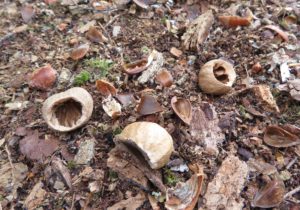Flying Squirrels
by Linda Spielman
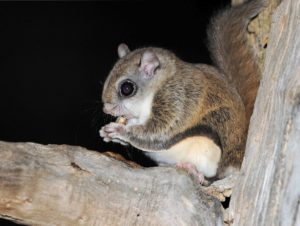
Our Hammond Hill forests are home to several kinds of squirrels: red and gray squirrels (grouped together as tree squirrels) and flying squirrels. For me flying squirrels are the most intriguing—there aren’t many other animals that are as common as they are and yet as rarely seen or otherwise detected. Red and gray squirrels often reveal their presence by chattering at us when we pass too near, and when there’s snow on the ground their tracks seem to be everywhere. Flying squirrels are active at night rather than during the day, and they spend less time on the ground than red or gray squirrels, so we don’t see them or their tracks as often. But they inhabit our forests in numbers that may rival those of their red and gray cousins.
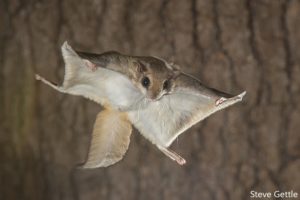
Flying squirrels don’t really fly, instead they glide, and at that they’re real experts. Flaps of skin extend between the front and back legs on each side all the way out to the wrists and ankles, and the fur on the tail grows out sideways to form an additional flattened surface. By spreading its legs outward the flying squirrel gains lift when airborne, and the flattened tail adds to the animal’s buoyancy and control. A flying squirrel can launch from a perch high in a tree and maneuver through the branches to a landing site with tremendous precision.
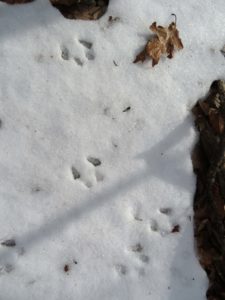
We actually have two different kinds of flying squirrels. The northern flying squirrel is the larger of the two, almost as big as a red squirrel. The smaller southern flying squirrel is intermediate in size between a white-footed mouse and a chipmunk. Flying squirrels live in the same kinds of habitats as red and gray squirrels and eat the same kinds of foods: nuts, including hickory, beech, pine, spruce, and fir nuts; acorns; fungi, especially truffles; lichens; the buds, sap, flowers, and inner bark of trees; insects; bird eggs; carrion; and even small mammals. Fungi and animal foods contribute more to the food intake of flying squirrels compared to red or gray squirrels, but still, the ability of the four species to share the same kinds of habitats is remarkable. Our mixed temperate forests provide such a diversity of these foods that all of our squirrels are able to thrive. If they had to compete directly, flying squirrels might be pushed out by the larger and stronger tree squirrels, but the two types rarely encounter each other. As the diurnal reds and grays are retiring for the night the nocturnal flying squirrels are just waking up for a night of foraging. Morning sees flying squirrels back in the safety of their nests as red and gray squirrels reappear.
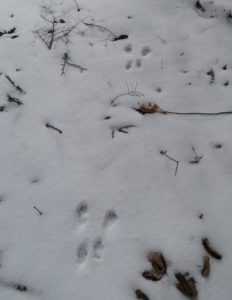
Winter’s cold and snow can create good conditions for finding flying squirrel tracks, but distinguishing among the various squirrel species requires careful observation. All of our squirrels are bounders and as they land and take off they leave groups of four prints separated by spaces, each group made up of the two larger rear prints and the two smaller front prints. In flying squirrel trails the front tracks in a 4-track group generally lie between or ahead of the rear tracks. Tree squirrel groupings differ in having the front prints consistently behind the rear prints. This difference can be seen in the photos—but note that the flying squirrel trails are heading toward the lower right and the gray squirrel is bounding toward the top of the frame. Additionally, red and gray squirrel tracks are larger than flying squirrel tracks, and when bounding on the ground tree squirrels can jump farther than flying squirrels.
Flying squirrels also leave evidence that can be found in the summer. When a flying squirrel feeds on a hickory nut it leaves a circular opening with a smooth, inward sloping bevel. Red squirrels leave more irregular openings with ragged contours, and gray squirrels simply crack the nut into small shards. Where hickories occur, you might find the characteristic feeding sign of flying squirrels around the bases of large trees.

